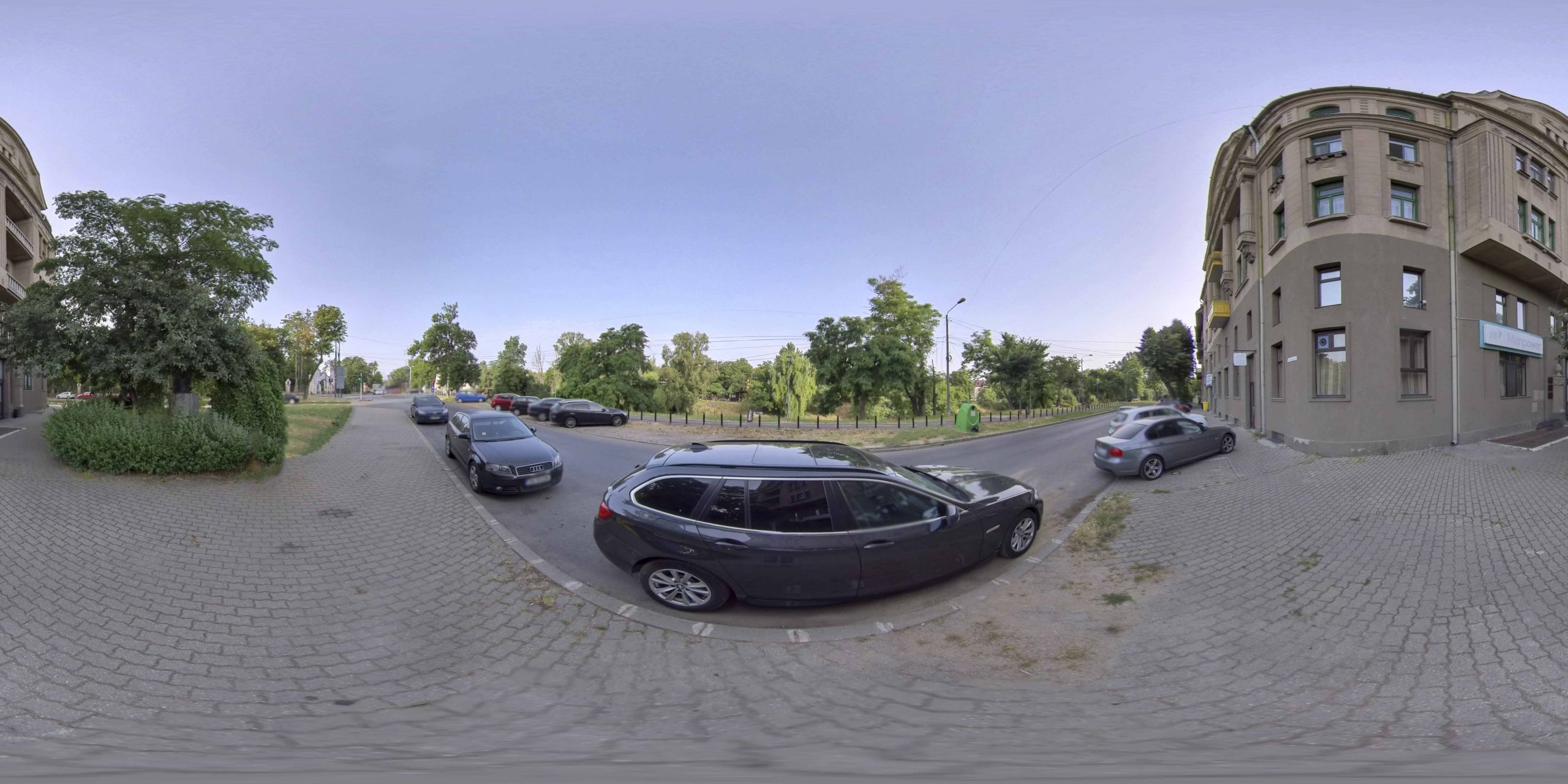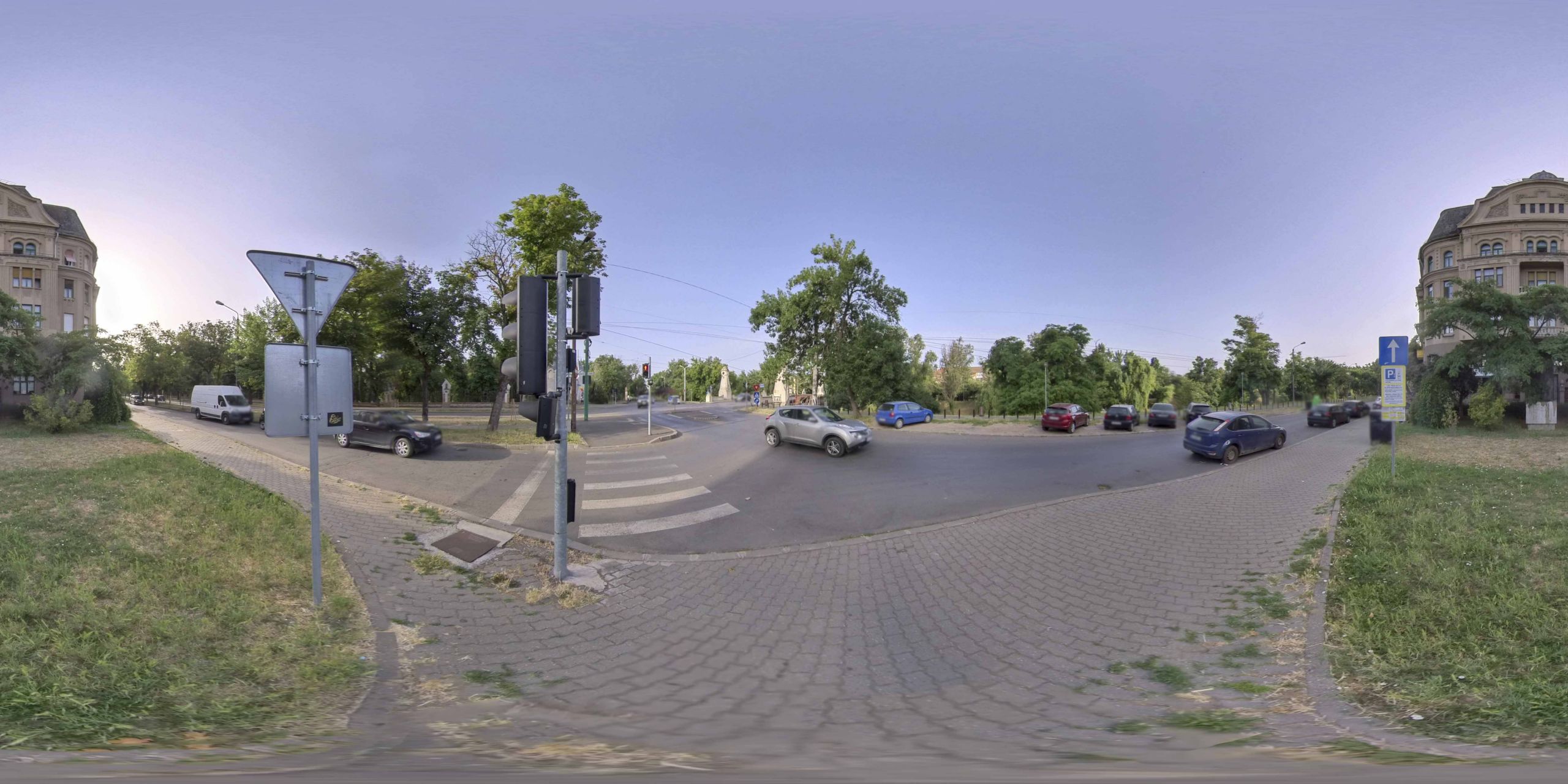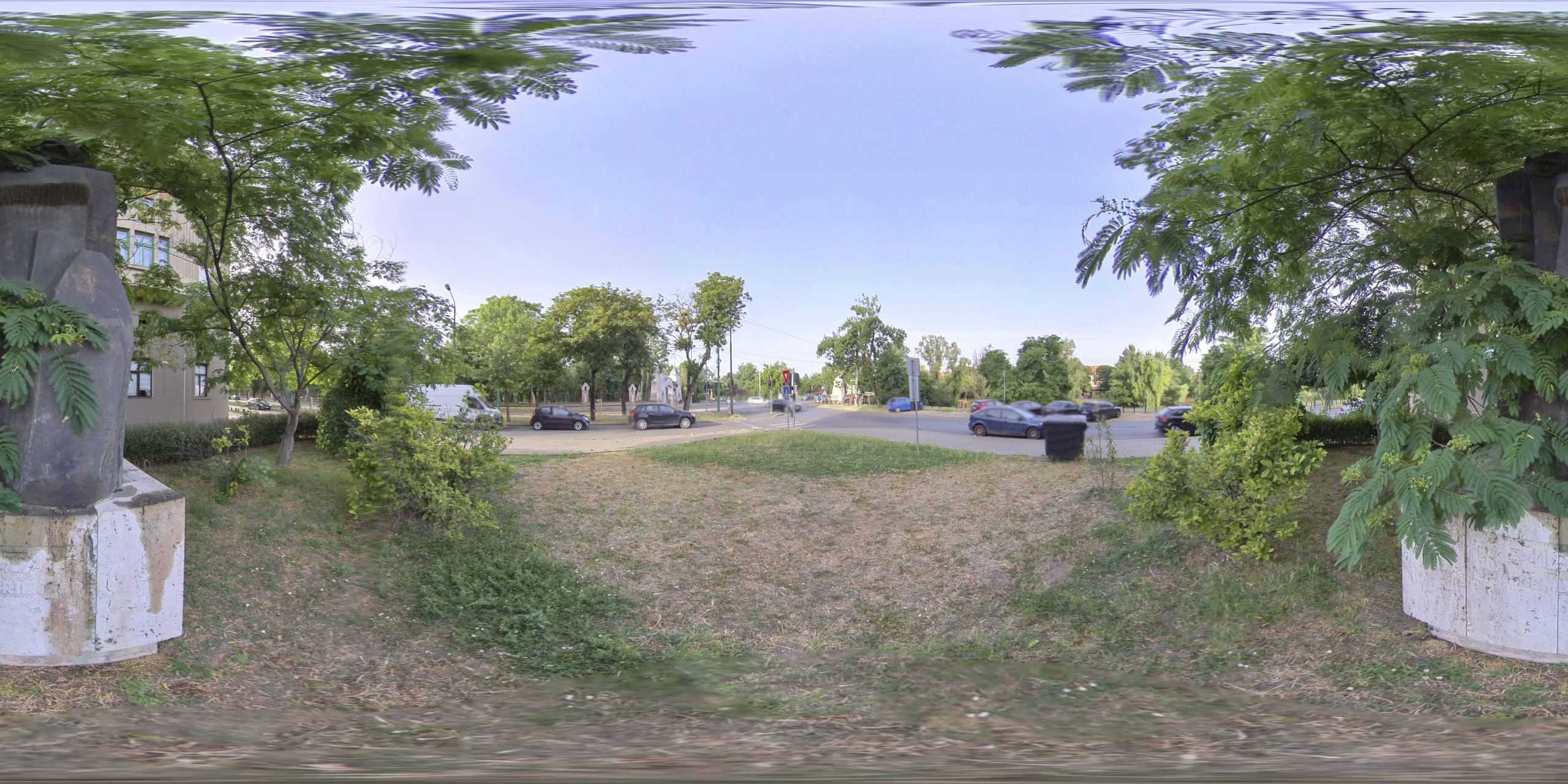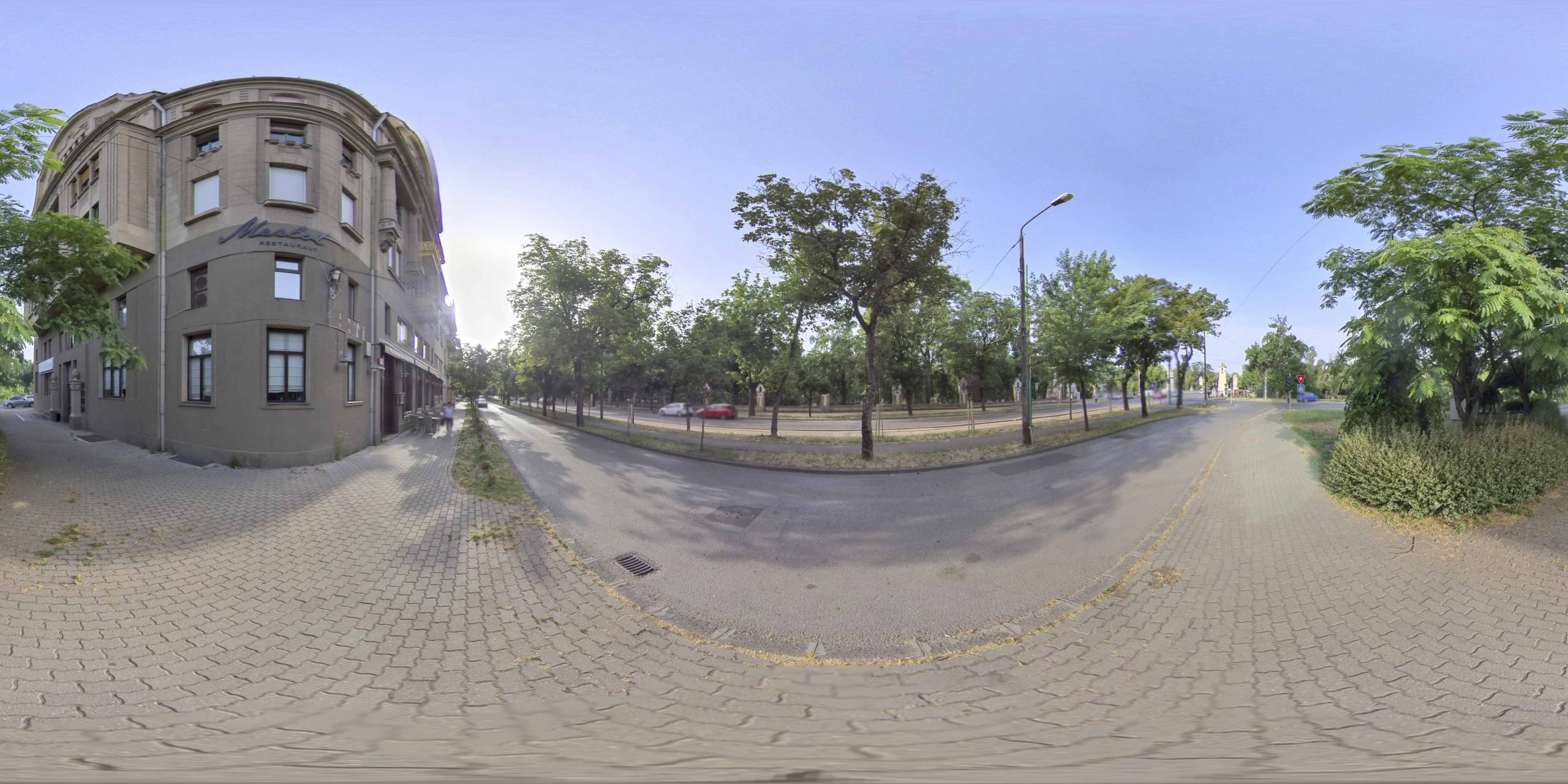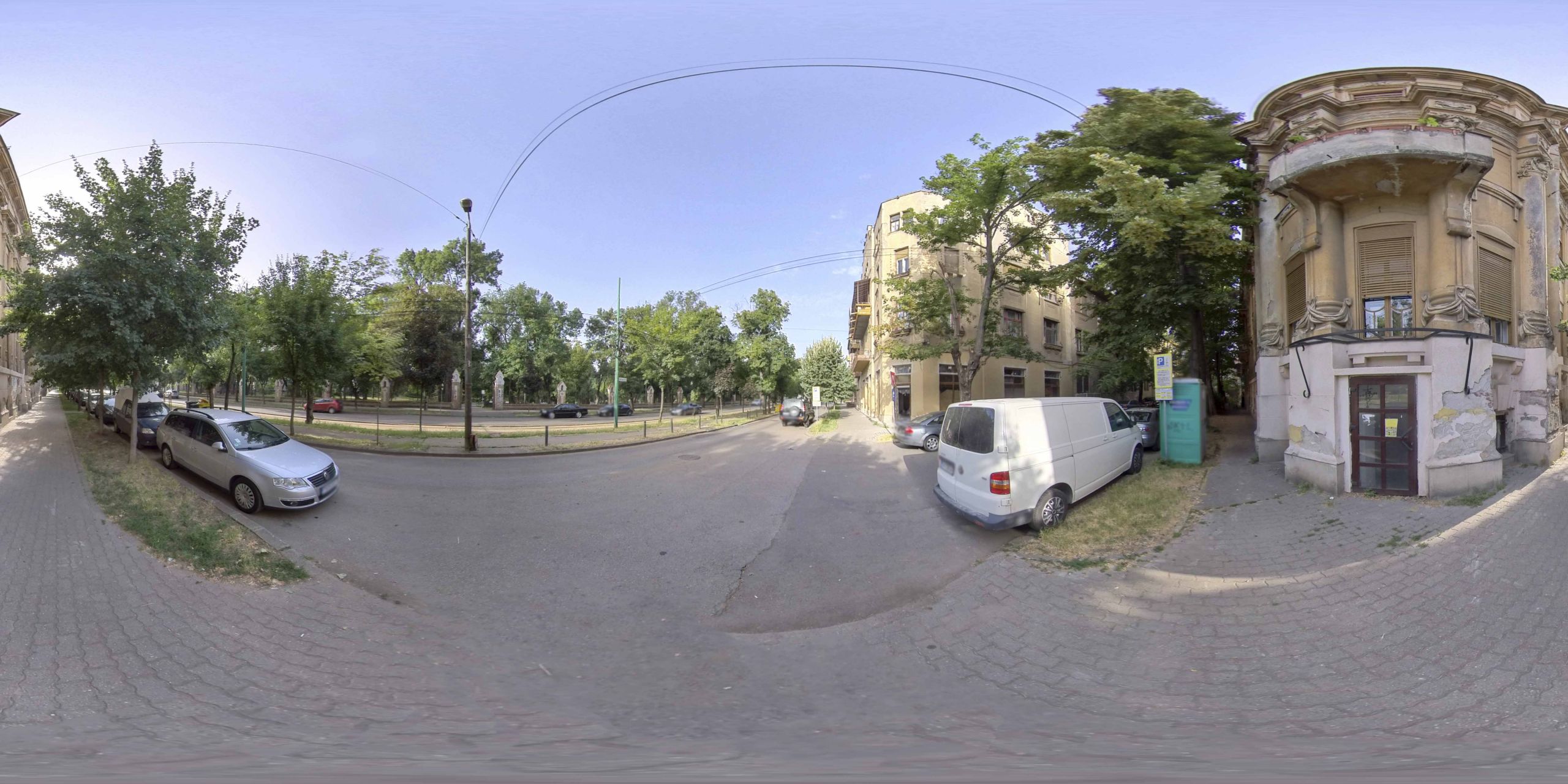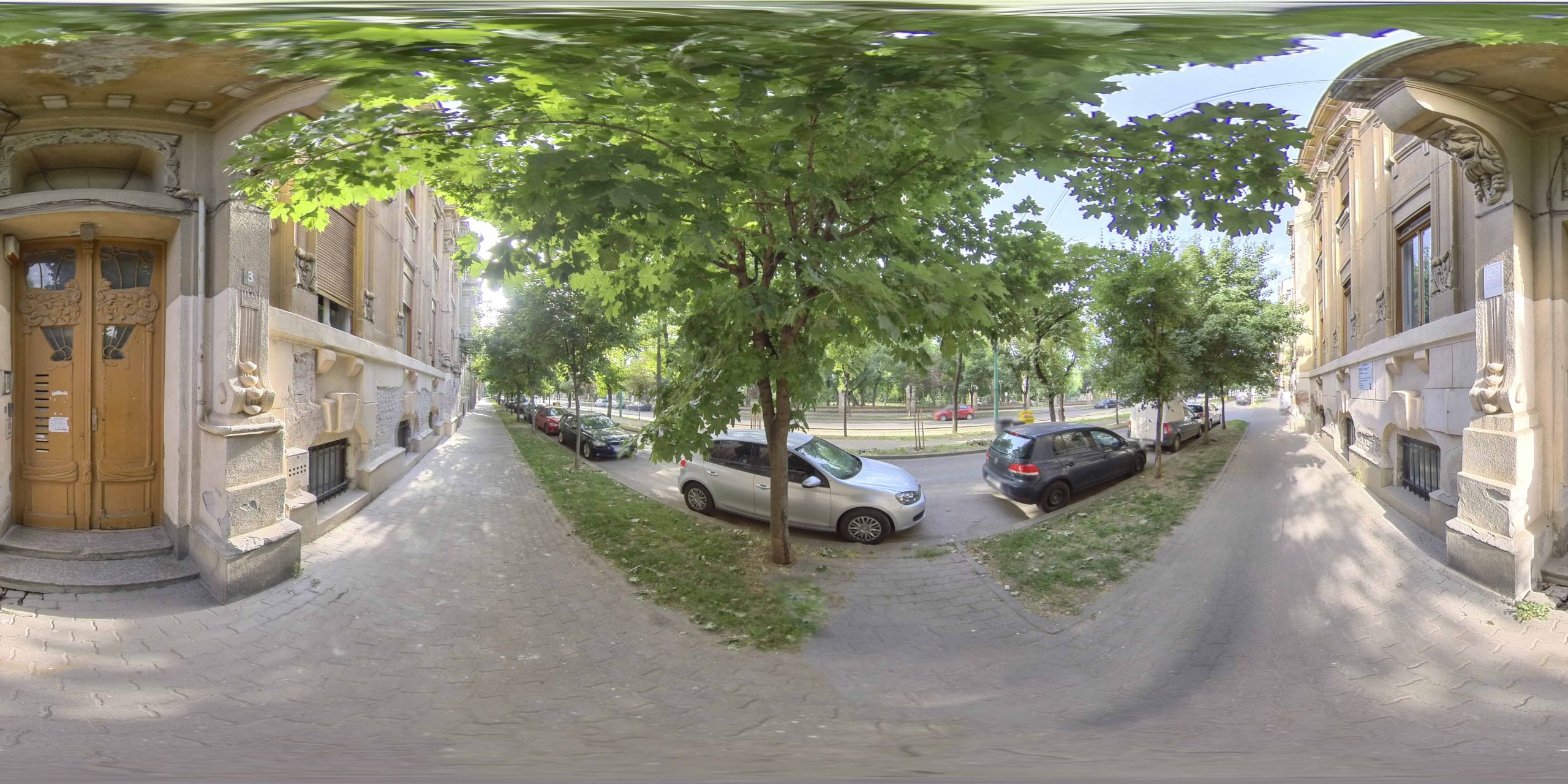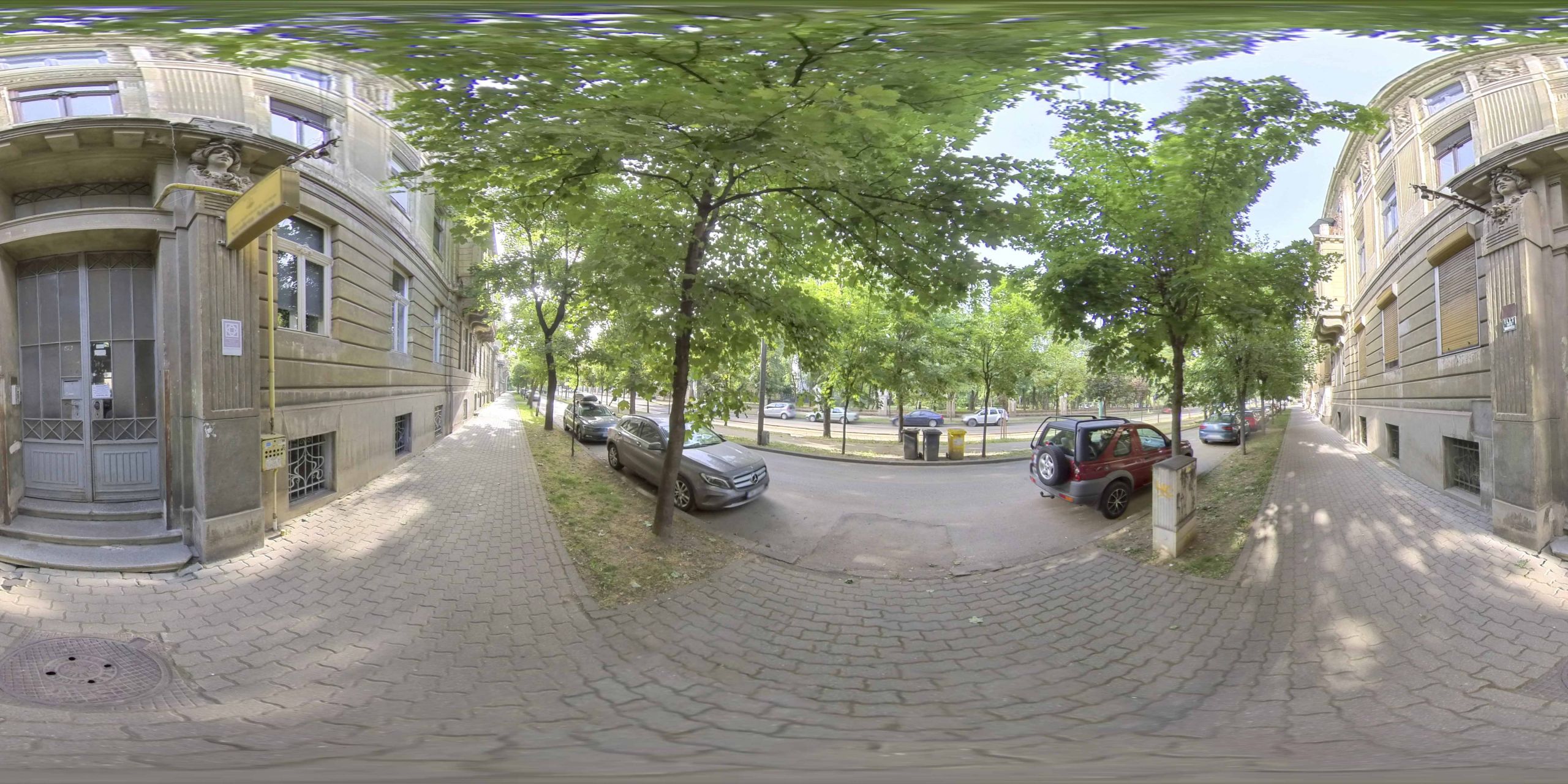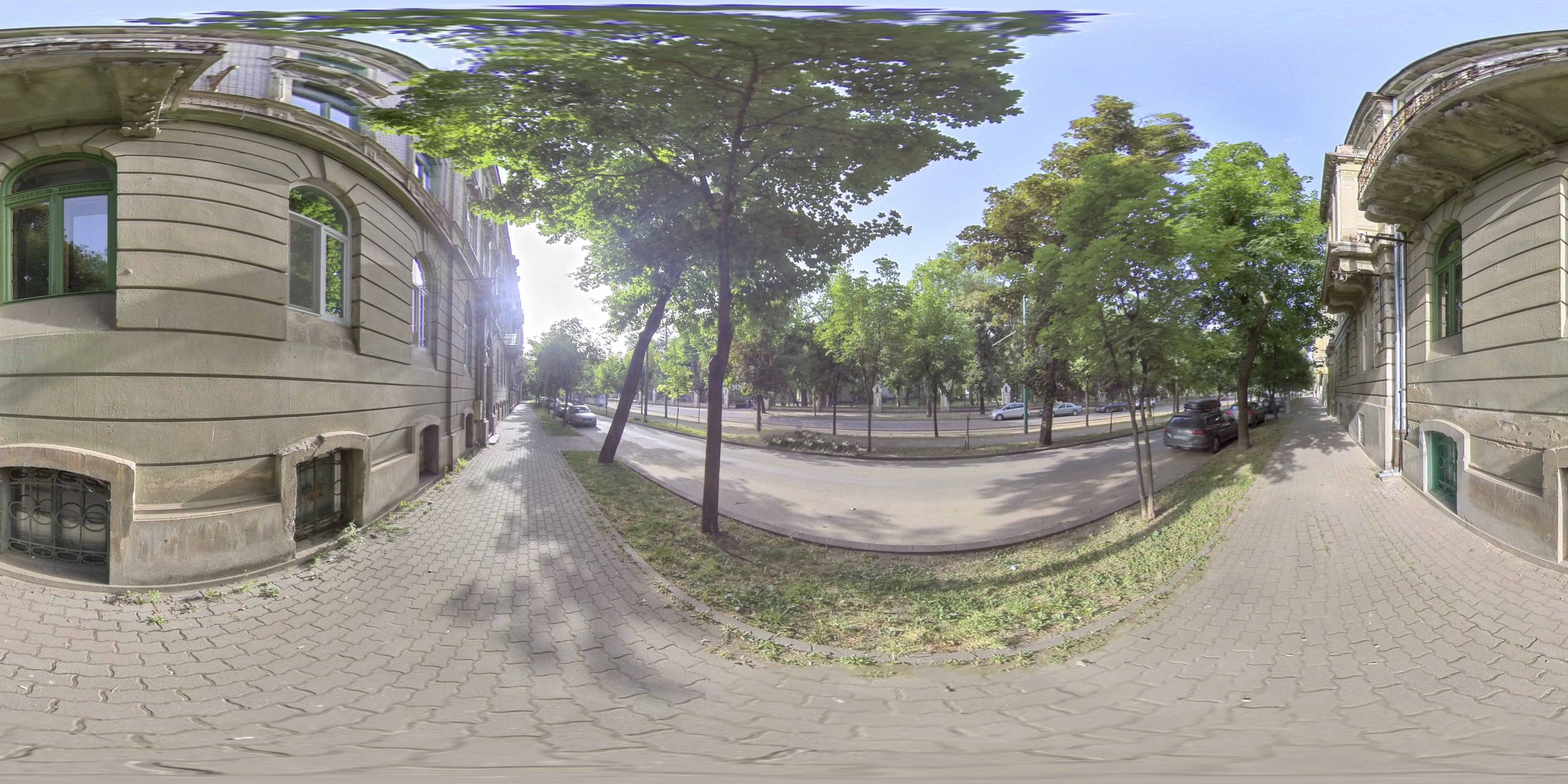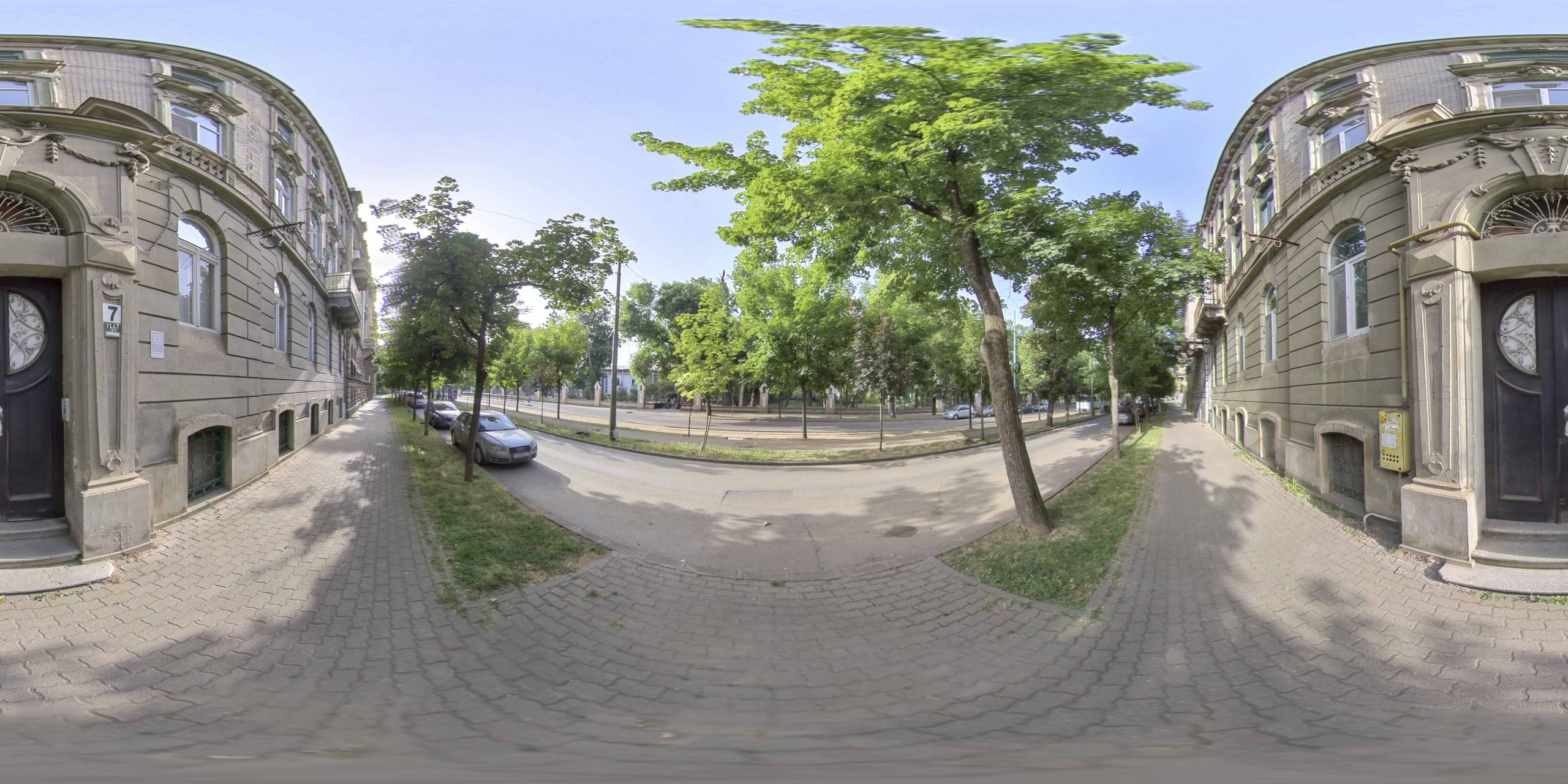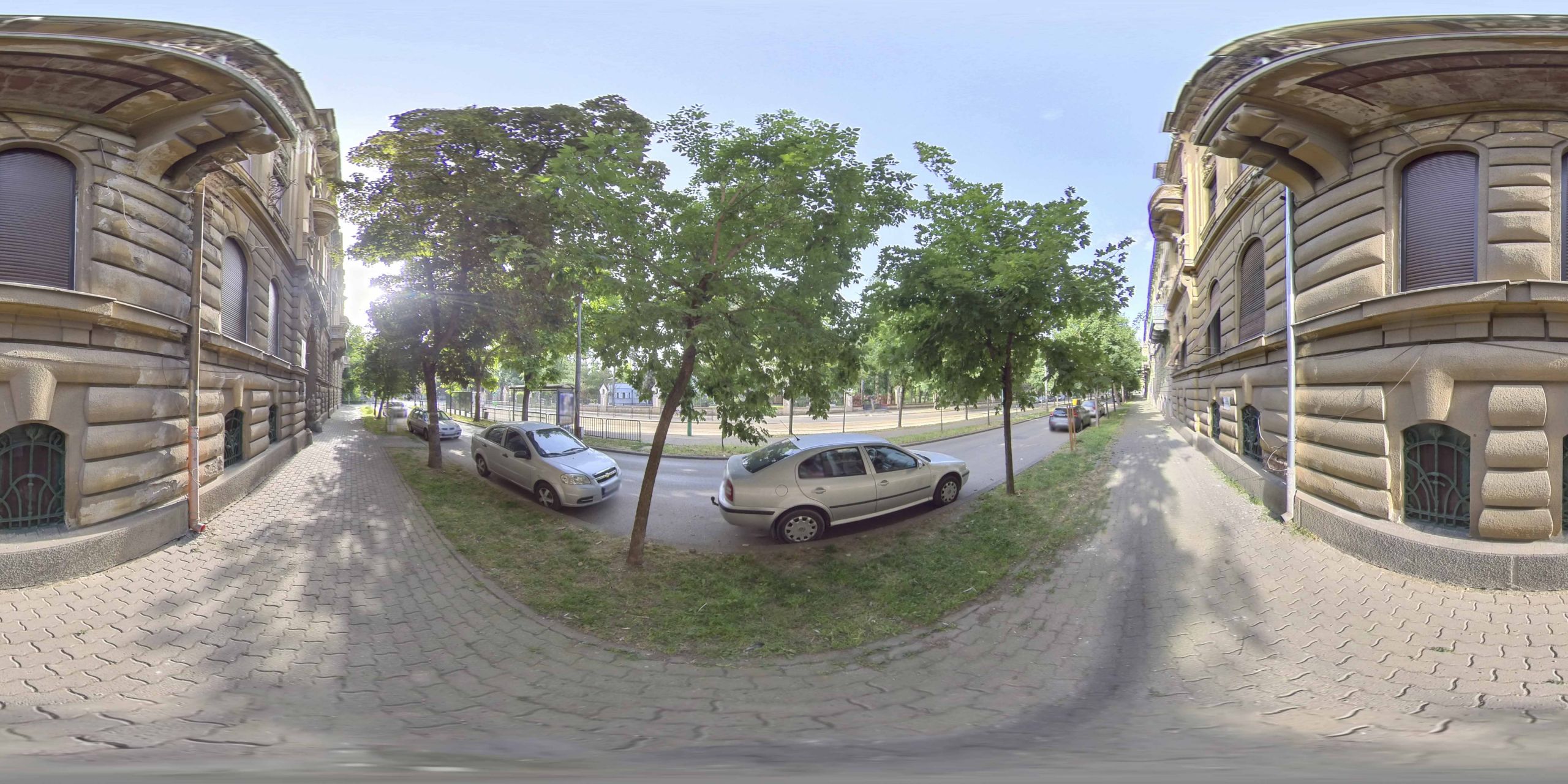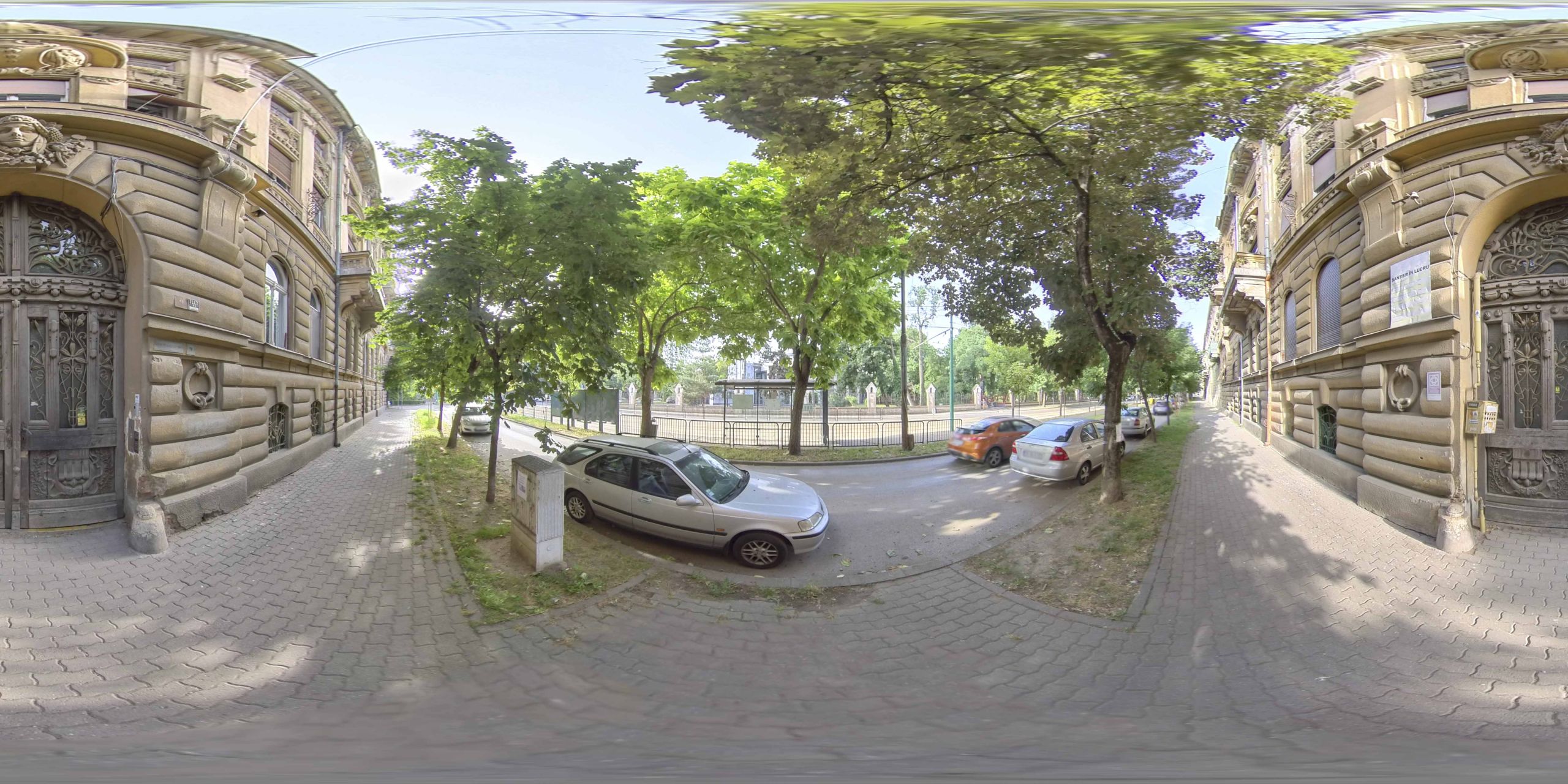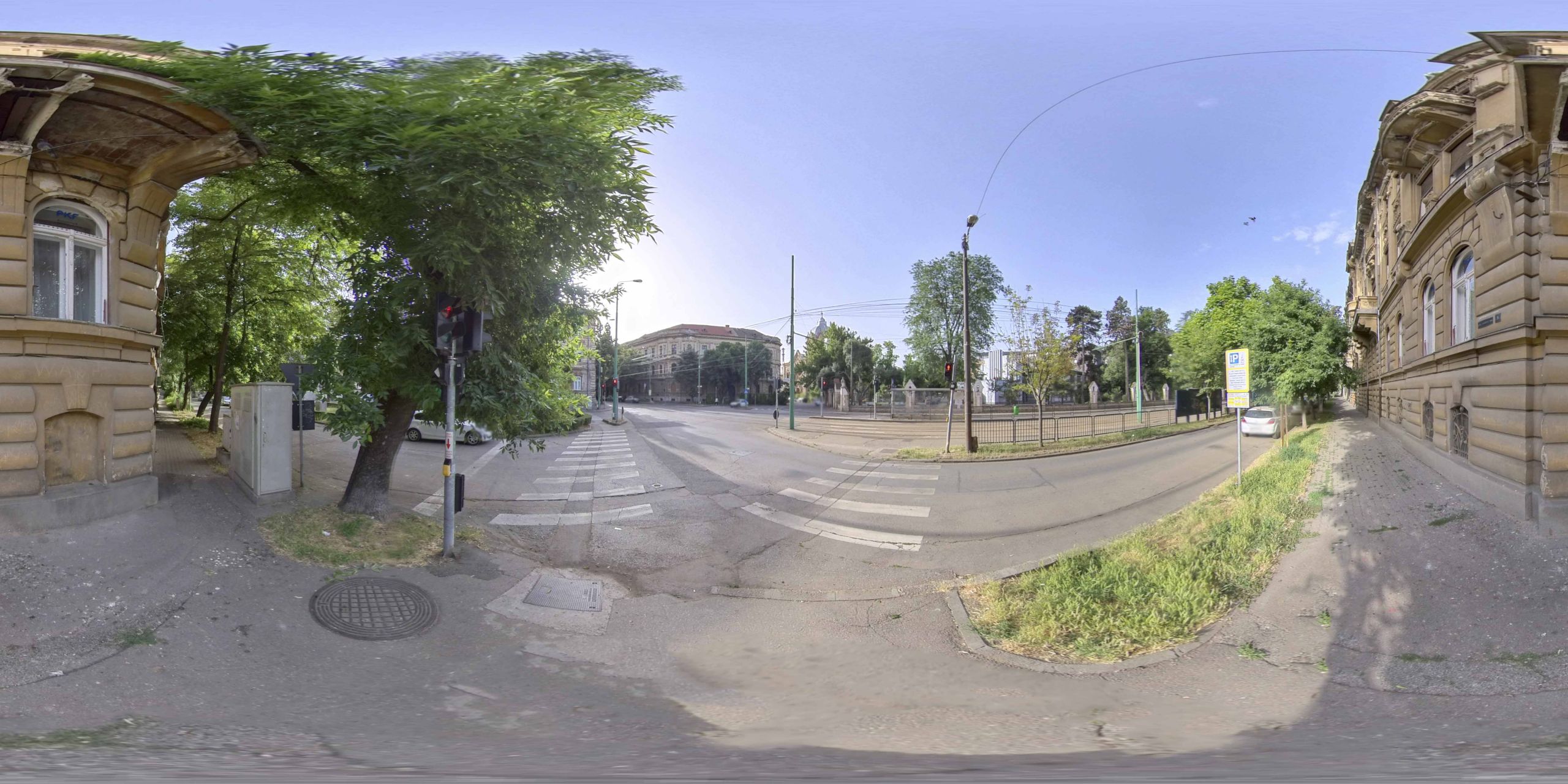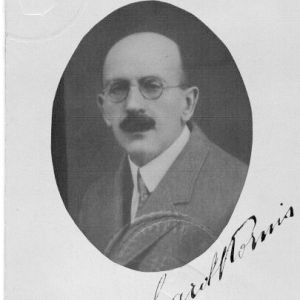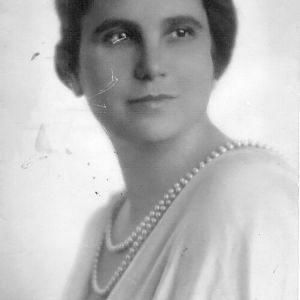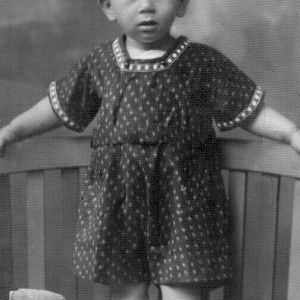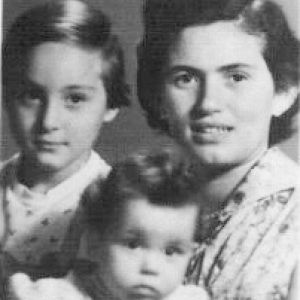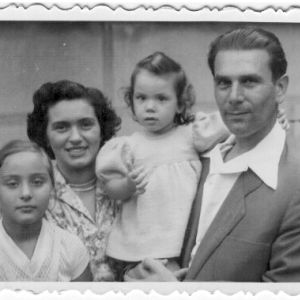The tenement houses on 3 August 1919 Boulevard
The current boulevard 3 August 1919 presents the unitary northern pediment, being furnished with monumental buildings between Academician Corneliu Micloși Square and Splaiul Nistrului. This pediment includes the palaces: Neptune, the palace of the widow Székely, Karl Kunz, Franz Anheuer, Ignatz Haymann and Miksa (Max) Steiner.
Listen to the audio version.
3 August 1919 Boulevard is the connecting artery between Fabric and the Cetate neighborhood, which is located on the former Esplanade, the 948-meter-wide (500-lane) plain around the fortress, on which it was forbidden to build. The eastern border of the Esplanade was located 100-150 meters west of the current Dacilor and Ștefan cel Mare streets.
In 1868, the Esplanade around the fortress was reduced from 948 meters to 569 meters (300 embarrassments), being built the first buildings on the current boulevard 3 August 1919, including the „Casa Arhiducelui”, purchased in 1873 by Archduke Johann Salvator of Habsburg-Tuscany.
In 1892, the military fortress character of the city was canceled and the demolition of the fortifications began (after 1899). In 1901-1903, the urban plan of the city was designed by Professor Szásztay László, who proposed the street connections between the historical Cetate and Fabric neighborhoods, through the arteries formed by 1989 Revolution Boulevard, and 3 August 1919 Boulevard to the current Academician Corneliu Micloși Square.
The current 3 August 1919 Boulevard presents the unitary northern pediment, being furnished with monumental buildings between Academician Corneliu Micloși Square and Splaiul Nistrului. This pediment includes the palaces: Neptun, Splaiul Nistrului no. 1 (the original owner was the architect Székely László, built according to his plans, building permit March 3, 1912, completed in 1914), the palace of the widow Székely, the architect's mother, (bd. 3 August 1919 no. 1, architect Székely László, permission of construction March 8, 1911, completion of works October 24, 1911), Karl Kunz Palace (bd. 3 August 1919 no. 2, building permit November 6, 1902, completion of works October 29, 1903), Franz Anheuer Palace (bd. 3 August 1919 no. 5, building permit June 18, 1900, completion of works April 4, 1901), Haymann Palace (bd. 3 August 1919 No. 7, building permit May 21, 1900, completion of works April 1, 1901), Miksa (Max) Steiner Palace (bd. 9 August 1919 No. 9, building permit June 4, 1901, completion of works April 17, 1902).
The built fronts of the buildings on 3 August 1919 Boulevard between Splaiul Nistrului and Academician Corneliu Micloși Square belong to the style of the 1900s (Secession), with two exceptions: the Illits Gyula and Steiner palaces. In the case of the last two, the strong bosses of the plinths and horizontal registers evoke the Italian renaissance, while at higher levels, decorative elements such as caryatids or the theme of ships from the pediment of Steiner Palace, for example, create a strong eclectic mix. Steiner Palace is similar to the building of the Hungarian River Administration in Budapest, built between 1910-1913 by architects Karman and Ullman.
Among the secession -style facades, the one of the Anheur palace stands out, both for the general floral ornamentation, but especially for the female characters with pounds that decorate its last register. Another secession façade, which is notable for the volume of the strong pilasters but also for the capitals in the shape of female masks, is that of the Karl Kunz Palace, built according to the plans of the architect Gabor Fodor.
Through its austere geometric volume and language devoid of decorative excesses, the house of the widow Szekely presents itself as a singular object in front of the former Liget Boulevard, anticipating by a few years the modernist searches of the famous Viennese architect Adolf Loos.
In front of the Neptun Palace is the Pietà monument by sculptor Peter Jecza (1939 – 2009), built in memory of the 1989 Revolution.
The sculptor Stefan Calarasanu lived in the Karl Kunz house, and in the attic of the building from no. 11 of the 3 August 1919 Boulevard, opened in 1926, the first free art school, the building being known as the House of Artists. Albert Varga, Julius Podlipny, Nándor Kóra-Korber, Ferdinand Gallas, Oskar Szuhanek and Albert Krausz taught at this free school. The sculptor Romul Ladea (1901-1970) had his workshop in this house during the interwar period.
Bibliography:
Mihai Opriș, Mihai Botescu, Historical Architecture from Timișoara, Tempus Publishing House, Timișoara, 2014
Listen to the audio version.
Now I'm going to talk about grandpa Adolf Kohn and my father's job. The "Adolf Kohn and the Son" company, a company of varnishes, paints, chemicals, construction materials, wholesale and retail, belonged to both, but they didn't really understand each other. My grandfather was, in his own way, rather primitive, my father was modern, cultured, progressive. When it came to differences of opinion, which often happened, they stopped talking. This was the calmest and best period of time for my father.
To give just one example, suffice it is to say that my father started building the store in 1929. A company called "Adolf Kohn and the Son'' could not exist during the radical right-wing parties and regimes. And in this case, I could say that my father was lucky, he died earlier, and he didn't get to those times. The Romanianization of Jewish businesses and the expropriation of Jewish-owned homes in 1940 strengthened the uncertainty of our future destiny. With the establishment of labor camps, this time still in the country, the Jews were deprived of the opportunity to do paid work, and it was uncertain how long they would be able to resist. The climax of the uncertainty came in 1942 when I was deported to Transnistria.
(...) In this city, of which I have said only a few things, my mother Elsa Kornis had to learn to live, which she succeeded in doing.
When she arrived in Timisoara from Prague and heard her neighbors speak Hungarian, she assumed that they were arguing. That's how this language sounded for her. She later learned it, even though she couldn't pronounce it properly. She understood the meaning very well, then she started to like Ady Endre's lyrics and she even translated some poems very well... These appeared in Timişoara in her first volume of lyrics.
She was amused that most women in society talked about their ability to buy geese. They boasted that their goose had a large liver, they said the weight of the liver and the resulting fat. In Jewish houses it was cooked mostly with goose fat. Calories and cholesterol were not taken into account.
But in Timişoara it was not just about food and cooking. There was a remarkable cultural life here. My mother soon got in touch with the cultural Timișoara. Family friends included sculptor Ferdinand Gallas, painter Berczi Kraus, Oskar Szuhanek, poet and writer Endre Károly, and others. And with Jenny Janura he made a friendship that lasted until old age.
We had cultural evenings where these intellectuals met, but also others. Our house was the site of such meetings. The first years after World War I were quiet, peaceful years. We had a good financial situation, they hired a cook and a nanny for me and Ernö.
My mother knew how to cook only Bohemian dumplings and practically nothing else. At noon we were all together, the meal was served, but we children had to say a short prayer after washing our hands. For my father, it was important not to talk at the table and to eat all from the plate.
I want to say a lot more about my mother because she was an extraordinary human. It is interesting to note that certain human traits accompany them throughout their lives. I give my mother as an example, she adapted to any situation. At least apparently.
She had a hard time parting with Prague. She lost the atmosphere, her friends, her family, but in a short time she felt at home also in Timişoara, in a totally special city, in an arranged marriage. The fact that her three children, as adults, went to three corners of the world and that she was left alone in Romania, she endured it thinking of their well-being.
Géza Kornis, born in 1916 in Timişoara - fragment from Memoria salvată, Volume II, coordinators Smaranda Vultur and Adrian Onică, West University of Timișoara Publishing House, 2009.
When I came here was the little movie theater, the Capitol movie theater, the one in Josephine, and that miserable Apollo, who was full of fleas… They were good movies, but you couldn't stand there because your feet were full of fleas!
The baths of Neptune, the popular bath, were also made by Szekely. The building was once for sale for six million, but no one had the courage to buy it because the building was on the first floor full of water, dampness… Above were houses, it was a good house, but it was not bought.
The park next to Apollo is the oldest park, named Franz Joseph. It was also the most beautiful, there the children walked with their mothers, because there was not so much dust there.
Elisabeta Dauerbach (Porumb), born in 1913 in Bacsko - excerpt from the interview conducted by Mihaela Sitariu in Timișoara in 2003, Archive of the Group of Oral History and Cultural Anthropology, coordinated by Smaranda Vultur.
